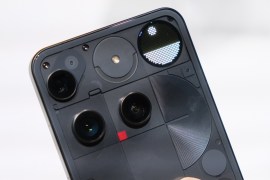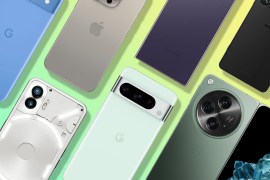Motorola Edge 50 Fusion review: colour me interested
Entry-level Edge 50 brings Pantone approved colours
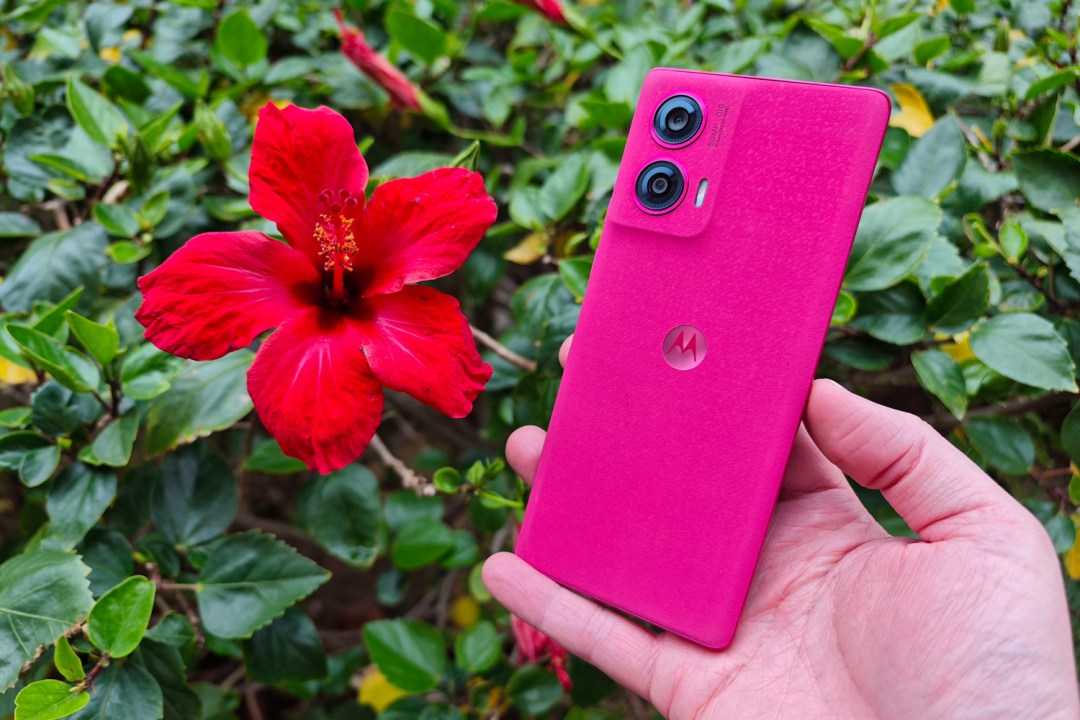
Stuff Verdict
Good looks, great screen, fast charging and a keen price. The Motorola Edge 50 Fusion isn’t perfect, but you get a lot of phone for the money.
Pros
- Colourful designs and unique materials
- Huge battery and rapid charging
- Main camera has a very capable sensor
Cons
- Camera app could be more responsive
- A fair bit of bloatware during initial setup
Introduction
After taking a generation off, Motorola has brought back the Fusion name. The Edge 50 Fusion is the new baby of the bunch, sitting below the Edge 50 Pro and Edge 50 Ultra, but sharing more than a few features with both. That includes a slim and colourful design, top-tier water resistance, and a Pantone-validated display/camera combo. Plus it’s even more affordable this time around, so has the potential to majorly shake up Stuff’s best cheap phones list.
With Google, Samsung and Apple’s most affordable options now duking it out in the £450-£500 range, this £350 phone has the potential to turn the heads of anyone looking to tame their mobile bill. But it’s not like rivals, including the Nothing Phone 2a and Redmi Note 13 Pro, haven’t had the same idea. I’ve been finding out how it stacks up against the increasingly tempting alternatives.
How we test smartphones
Every phone reviewed on Stuff is used as our main device throughout the testing process. We use industry standard benchmarks and tests, as well as our own years of experience, to judge general performance, battery life, display, sound and camera image quality. Manufacturers have no visibility on reviews before they appear online, and we never accept payment to feature products. Find out more about how we test and rate products.
Design & build: shrinky pinky
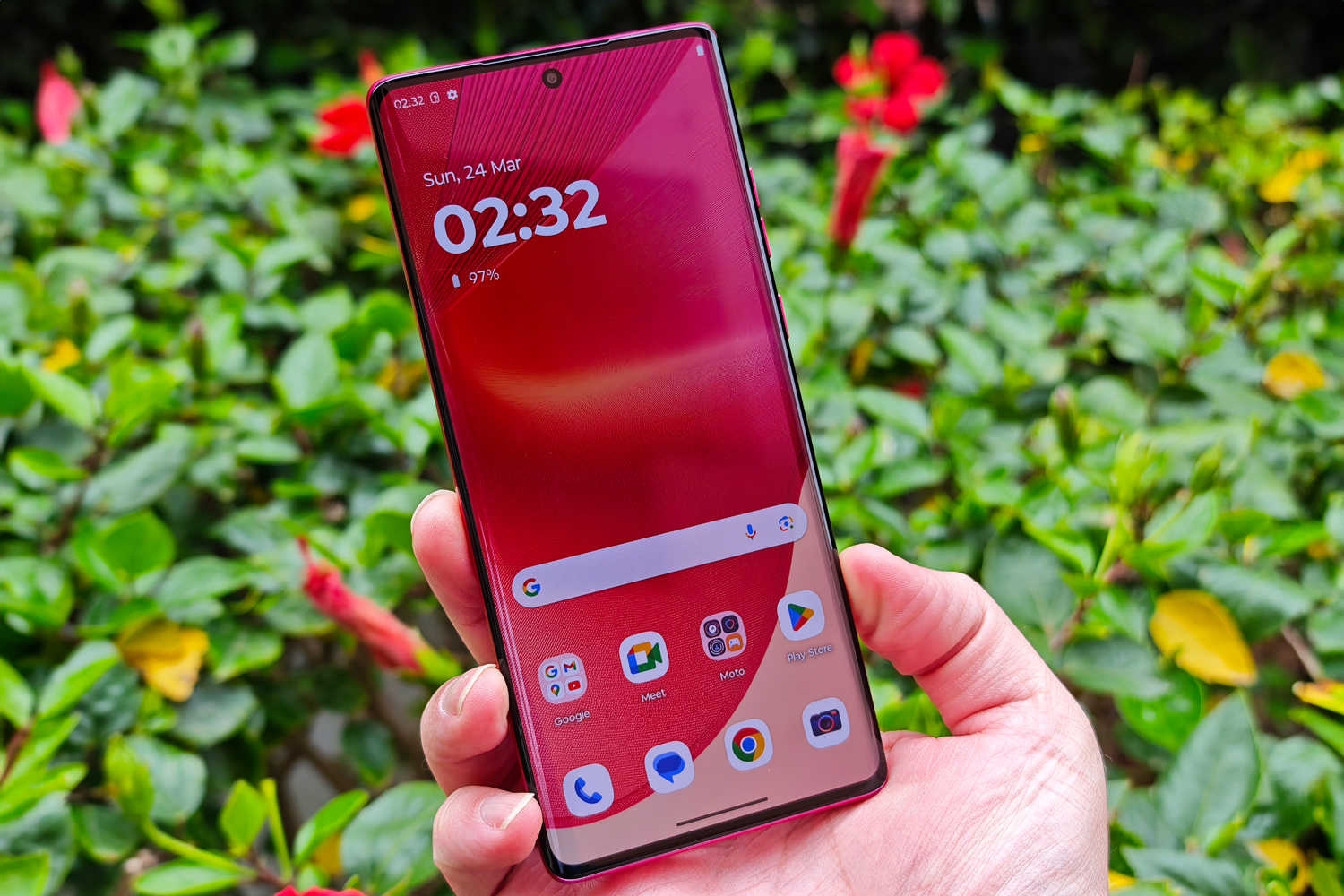
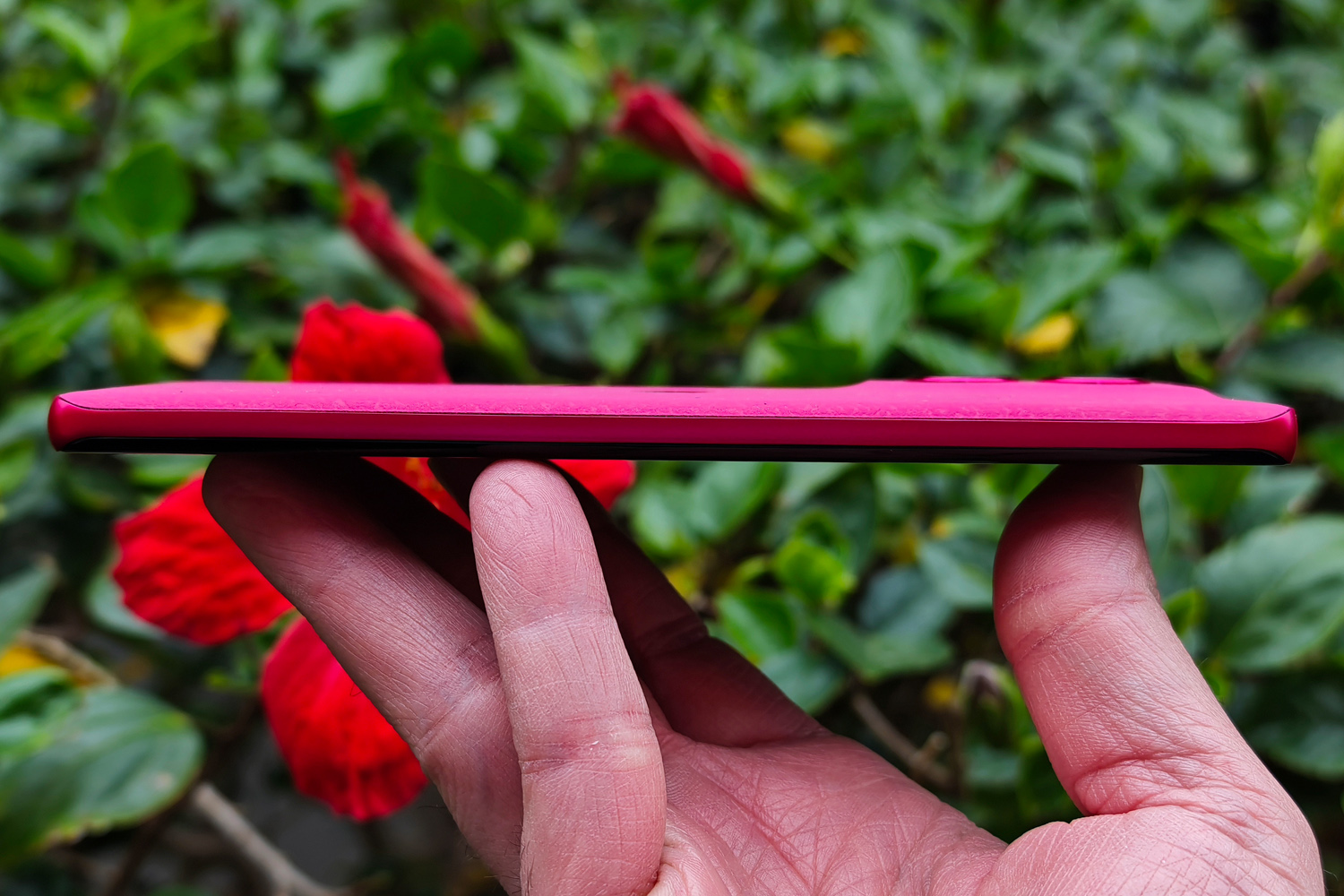
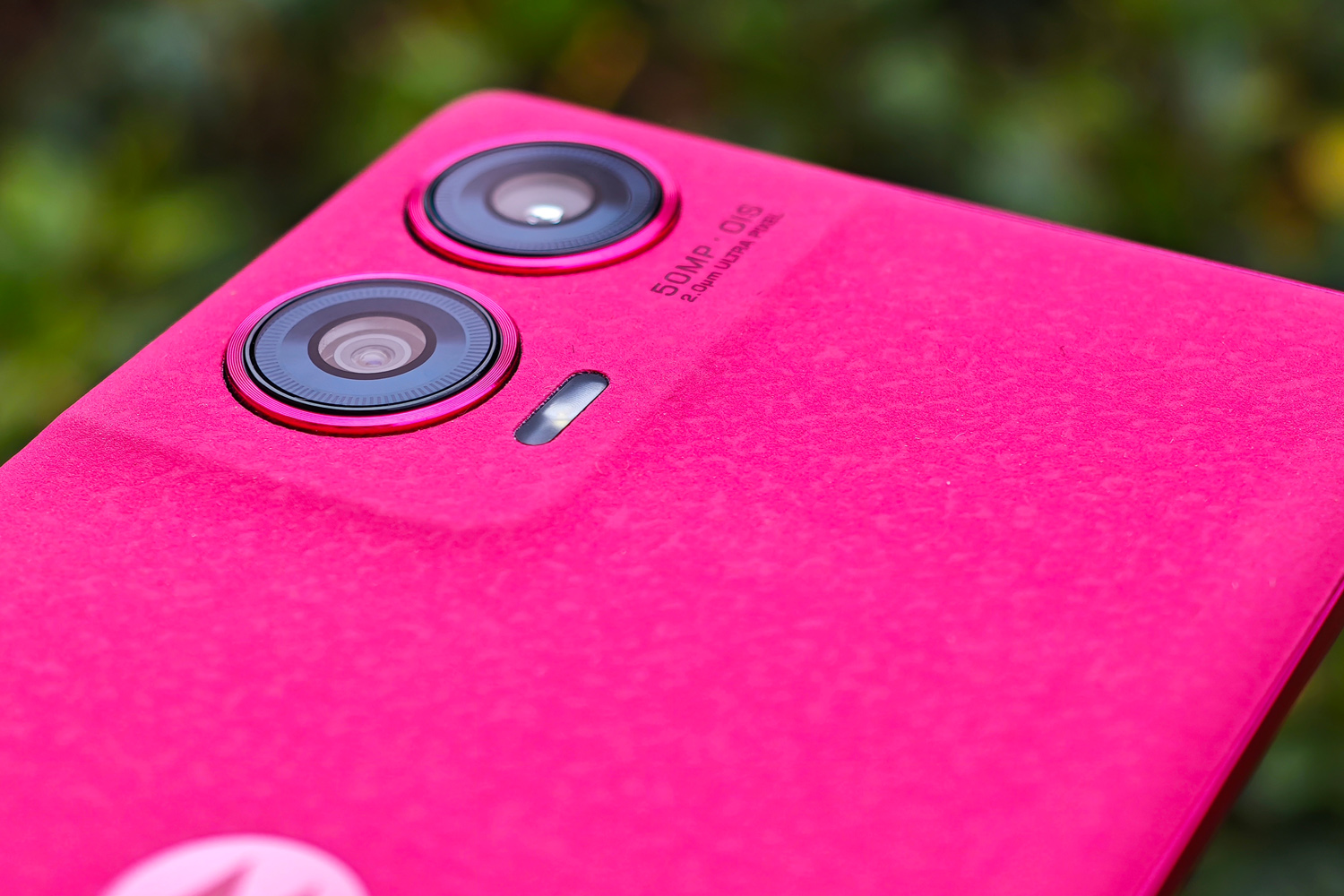
If you crave gadgets with a bit of colour, the Edge 50 Fusion will feel right at home in your pocket. The Hot Pink vegan suede colour is exactly that, being exactly as vibrant in reality as it looks in my photos. The texture is unique, too, being softer than the vegan leather Marshmallow Blue model but hopefully just as durable. The Forest Blue version I was sent for my in-depth review is a more familiar plastic composite that looks rather boring in comparison. If you don’t immediately put your new phone inside a case, definitely pick up either the suede or leather option.
All three have IP68 dust and water resistance, which is an excellent showing for an affordable phone. Gorilla Glass 5 up front should mean it survives accidental scrapes and scratches, too; I saw no surface damage after several weeks of being regularly pulled in and out of my trouser pocket. When held side-by-side with the Edge 50 Pro or Edge 50 Ultra you can tell this is the cheapest of the bunch, but I still think there’s a premium feel here that’s missing from some rival budget phones.
This is a fairly skinny phone at just 7.9mm, excluding the camera bump, and a reasonably light one at 175g. It feels a whole lot more substantial than the Oppo Reno 11F, despite weighing less. The way the panels curve into the central frame really accentuate that slimness, as do the svelte power and volume keys. There’s still a 6.7in screen in there, so we’re not exactly in compact phone territory any more.
There’s a fingerprint sensor built into the display, which had no trouble quickly recognising my thumbprint. Facial recognition can skip the lock screen whenever you raise the phone, too, but it’s not secure enough for banking apps.
Screen & sound: ahead of the curve?
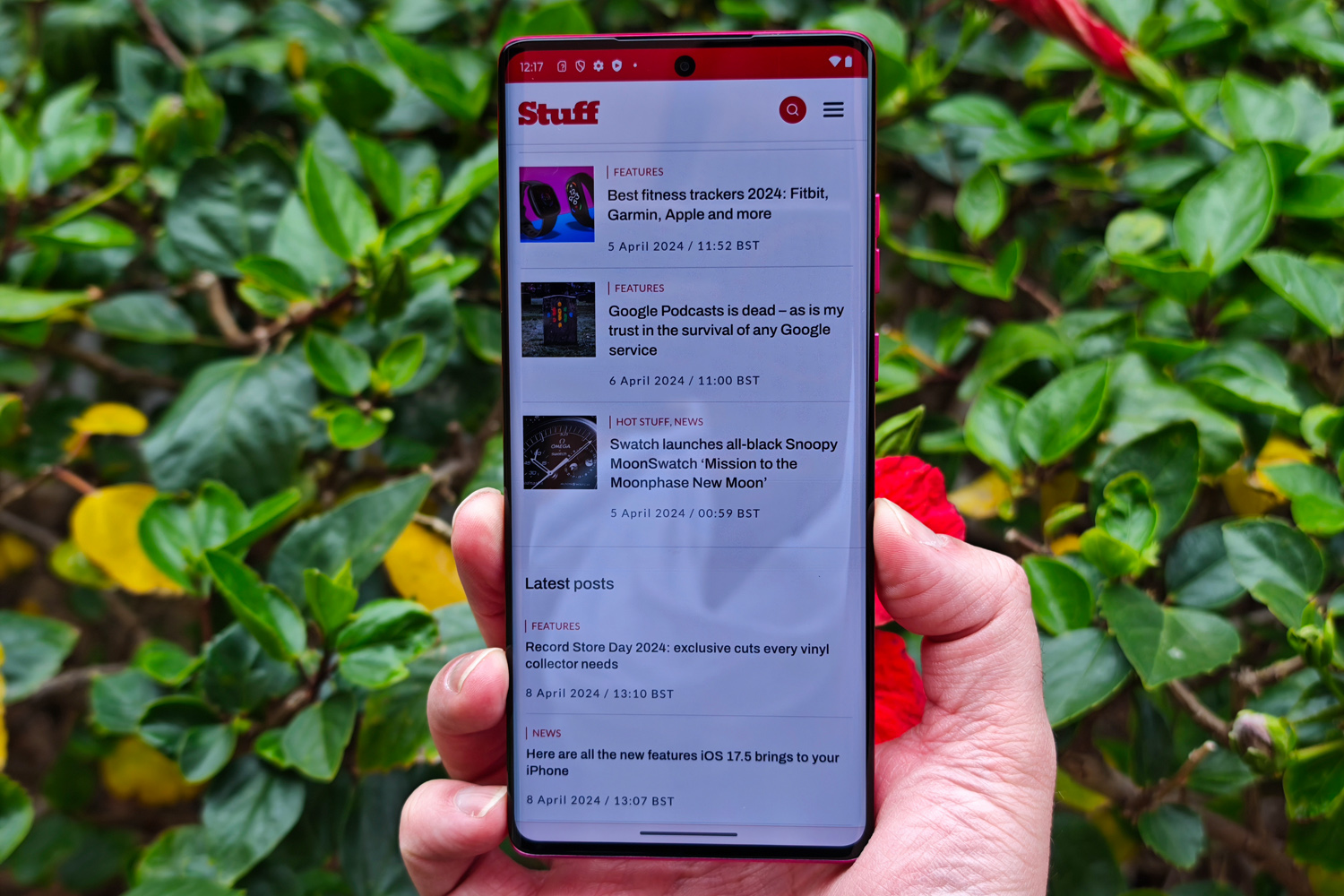
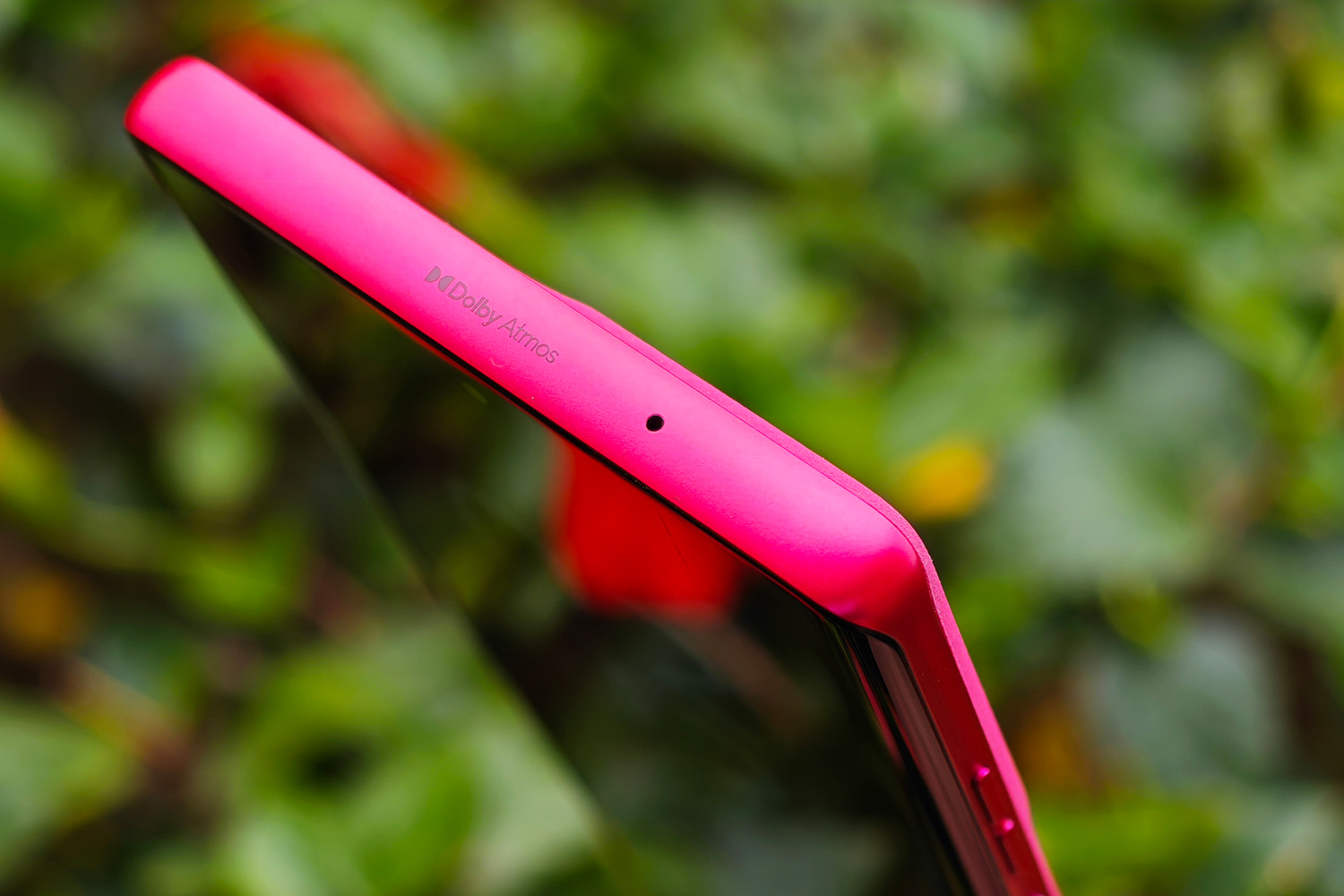
Motorola hasn’t skimped on the Edge 50 Fusion’s screen, opting for a 6.7in pOLED panel that curves in at the sides. Most flagships might be ditching curves in favour of flat glass, but there’s no denying this helped the phone fit more comfortably in my hand.
It ticks all the boxes you’d expect, including HDR support, a 144Hz refresh rate, Full HD+ resolution and 10-bit colour. Colours were punchy, images and text looked crisp at arms’ length, and brightness was pretty decent too; Motorola claims a peak 1600 nits. It shines brighter than a Nothing Phone 2a and I could still read the screen easily enough when outdoors in bright sunlight. It’s only at a disadvantage to pricier phones including the Edge 50 Ultra, which tops out at 2500 nits.
The Pantone validation apparently only applies to the Natural colour preset, which the phone doesn’t default to out of the box; with it enabled, colours are definitely more subdued and not as overly vivid. I definitely think I’d swap into this mode as a first priority if I was buying an Edge 50 Fusion. Those who prefer the Samsung-style approach of boosted, vibrant hues may think otherwise.
With the familiar downfiring main speaker and forward-facing earpiece combo, the Edge 50 Fusion pumps out audio at a respectable volume. There’s no real bass presence, and the high-end can be a little sharp if you properly crank the volume, but there’s decent stereo separation. That’s mainly thanks to the Dolby Atmos spatial upmixing, which meant I never had to go running for a pair of headphones just to watch YouTube.
Cameras: LYT it up
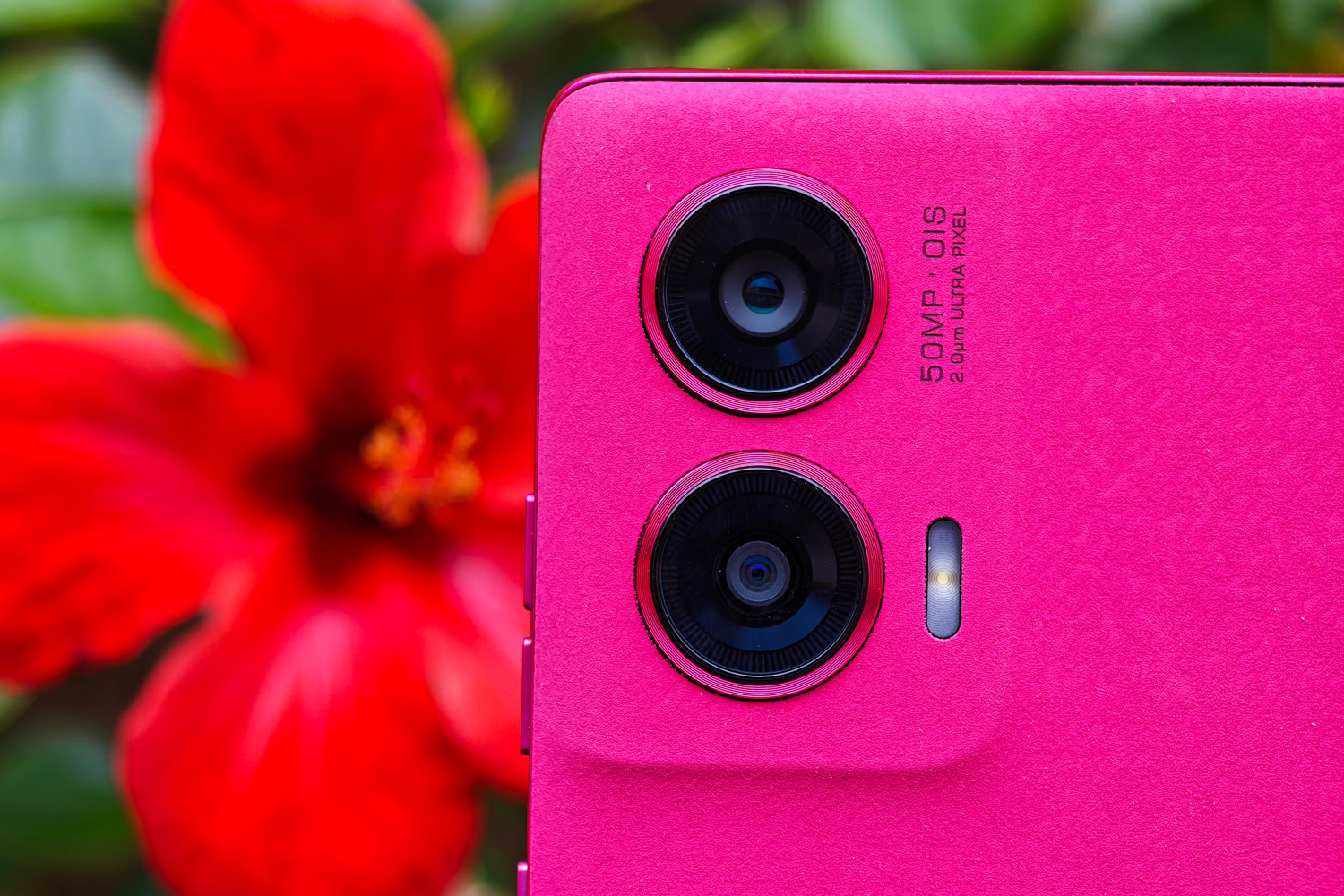
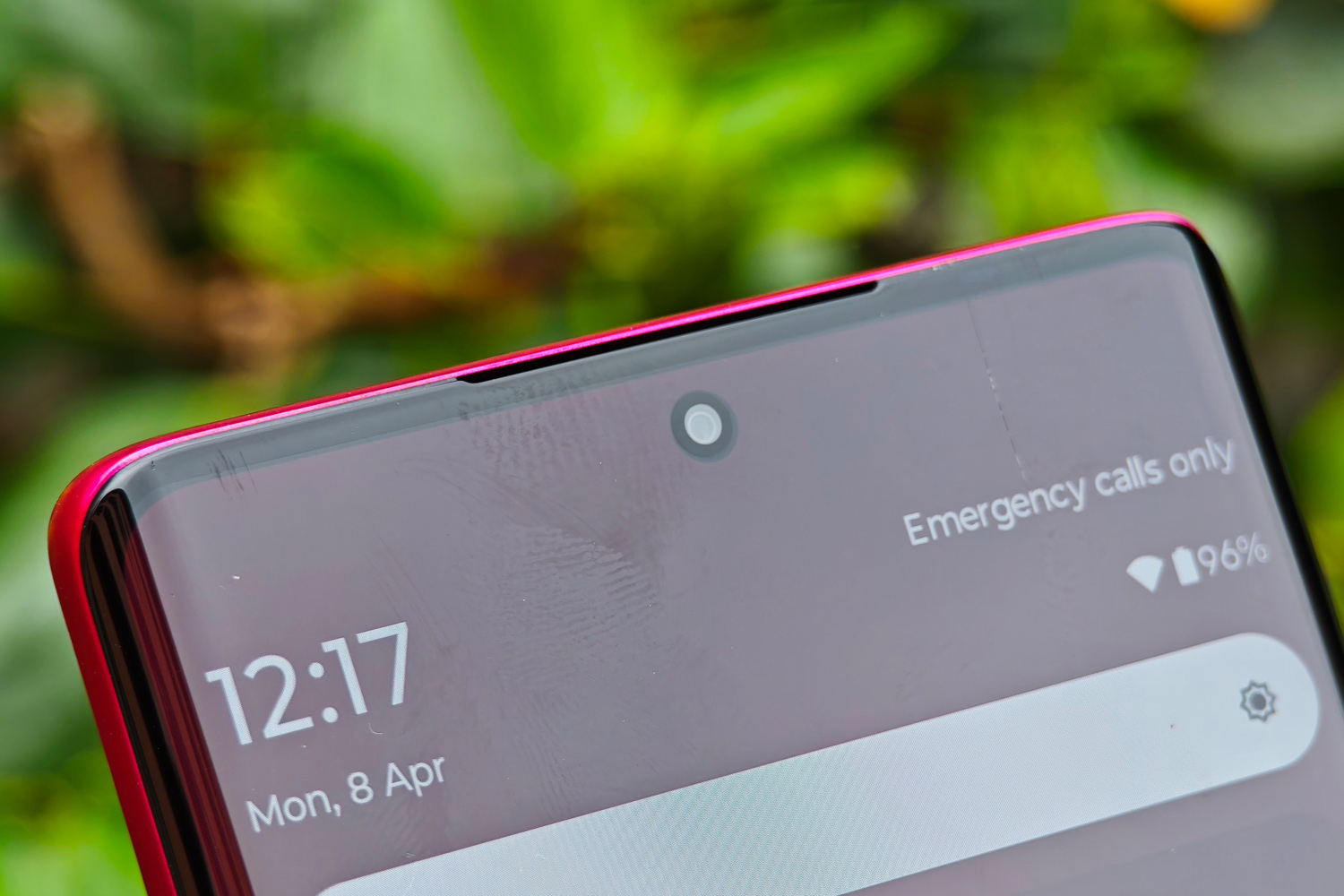
What’s this? An affordable phone that hasn’t tried to shoehorn in a macro snapper and claim it has a “three camera setup”? Bravo Motorola! The Edge 50 Fusion has two rear lenses, and I think is all the better for it. That’s because Moto has gone for a particularly capable main sensor – Sony’s LYTIA LYT-700 – with a 50MP pixel count, optical image stabilisation and a fairly wide f/1.88 aperture.
LYTIA sensors use a stacked CMOS design that bodes well for low-light image quality, and pixel binning everywhere else to capture plenty of detail. A 2x toggle in the camera app uses sensor cropping to add a zoom option. It’s backed up by a 13MP ultrawide, with macro focus for extreme close-ups, and there’s a 32MP selfie cam up front.
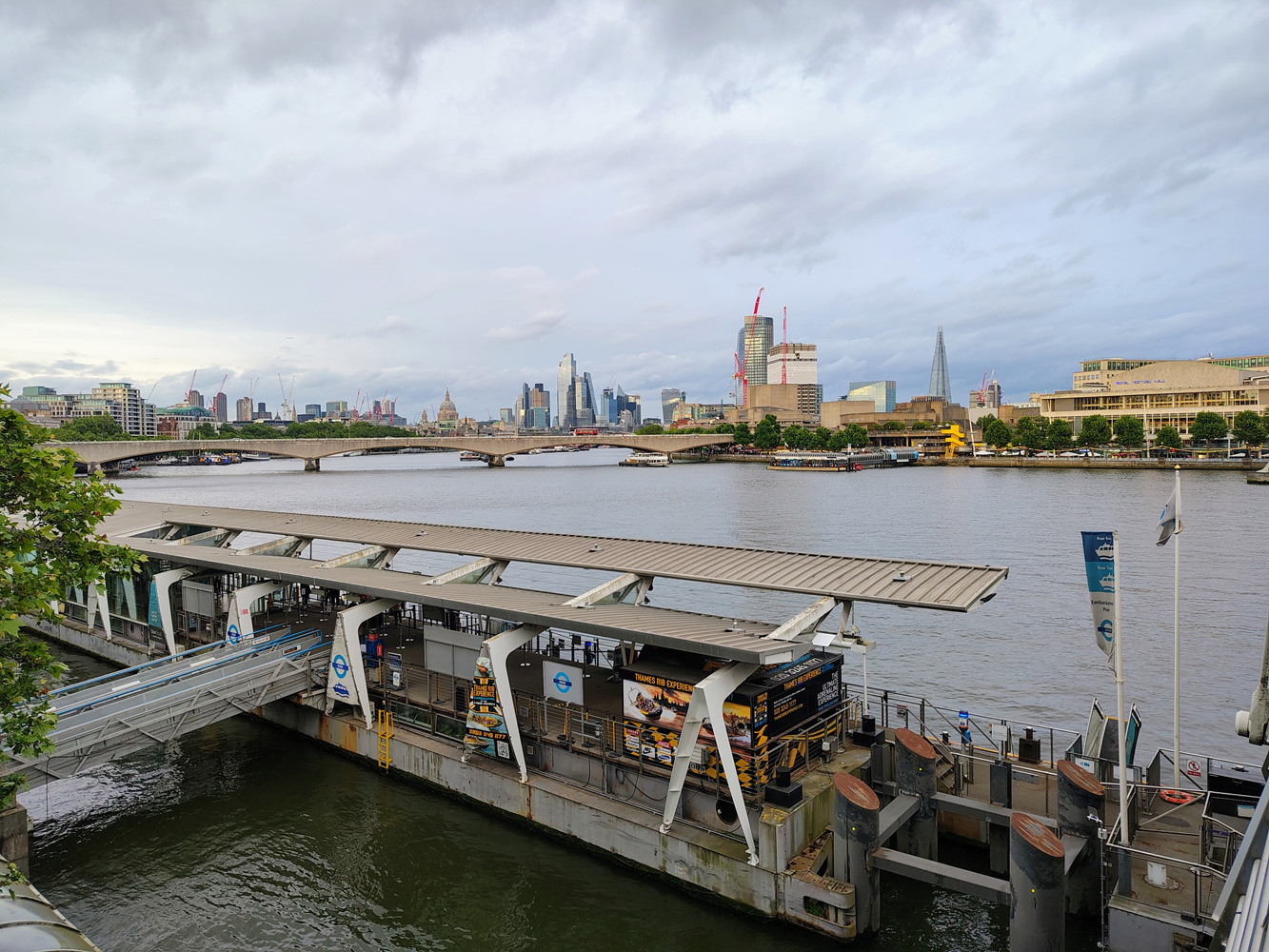




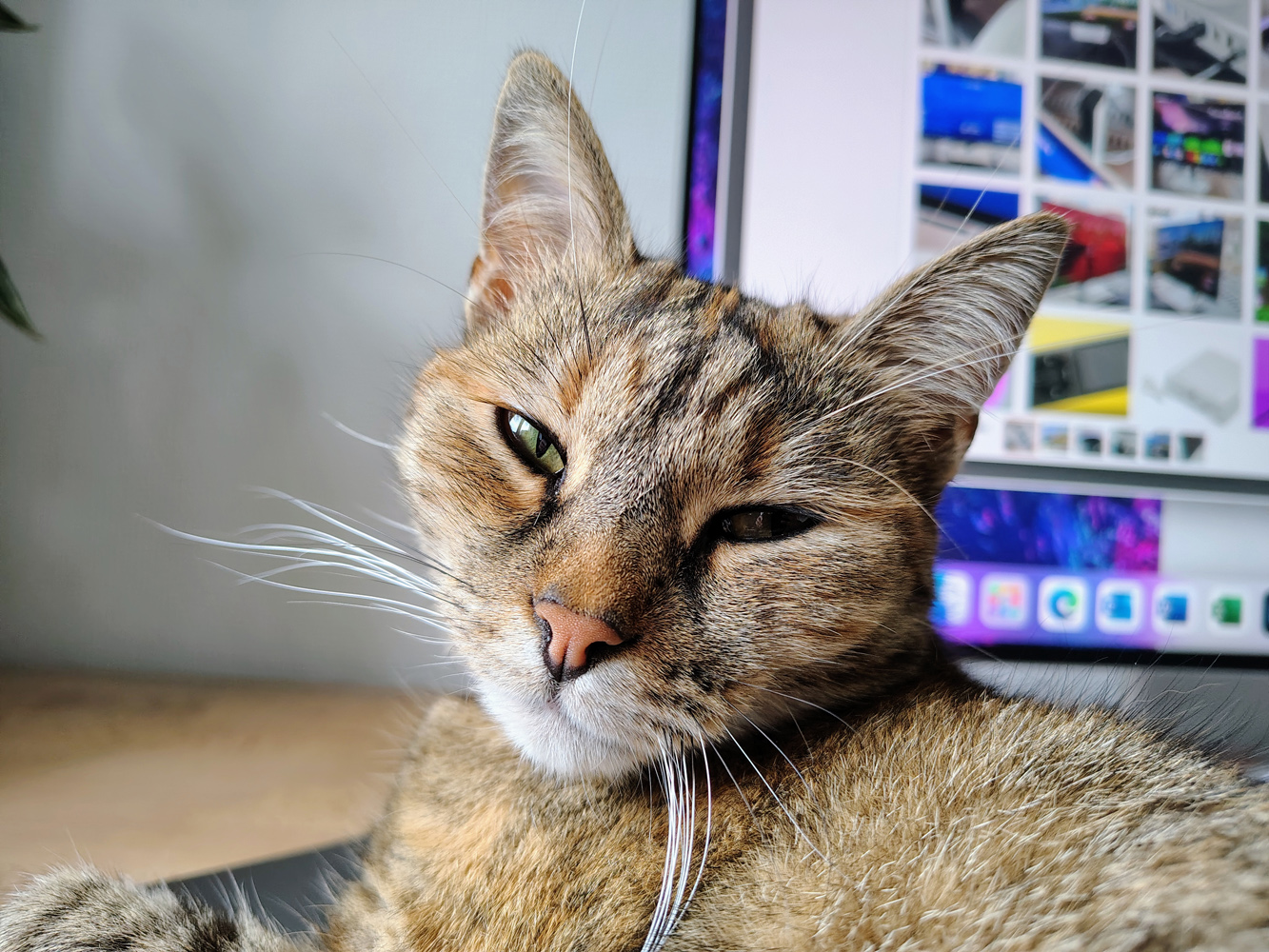
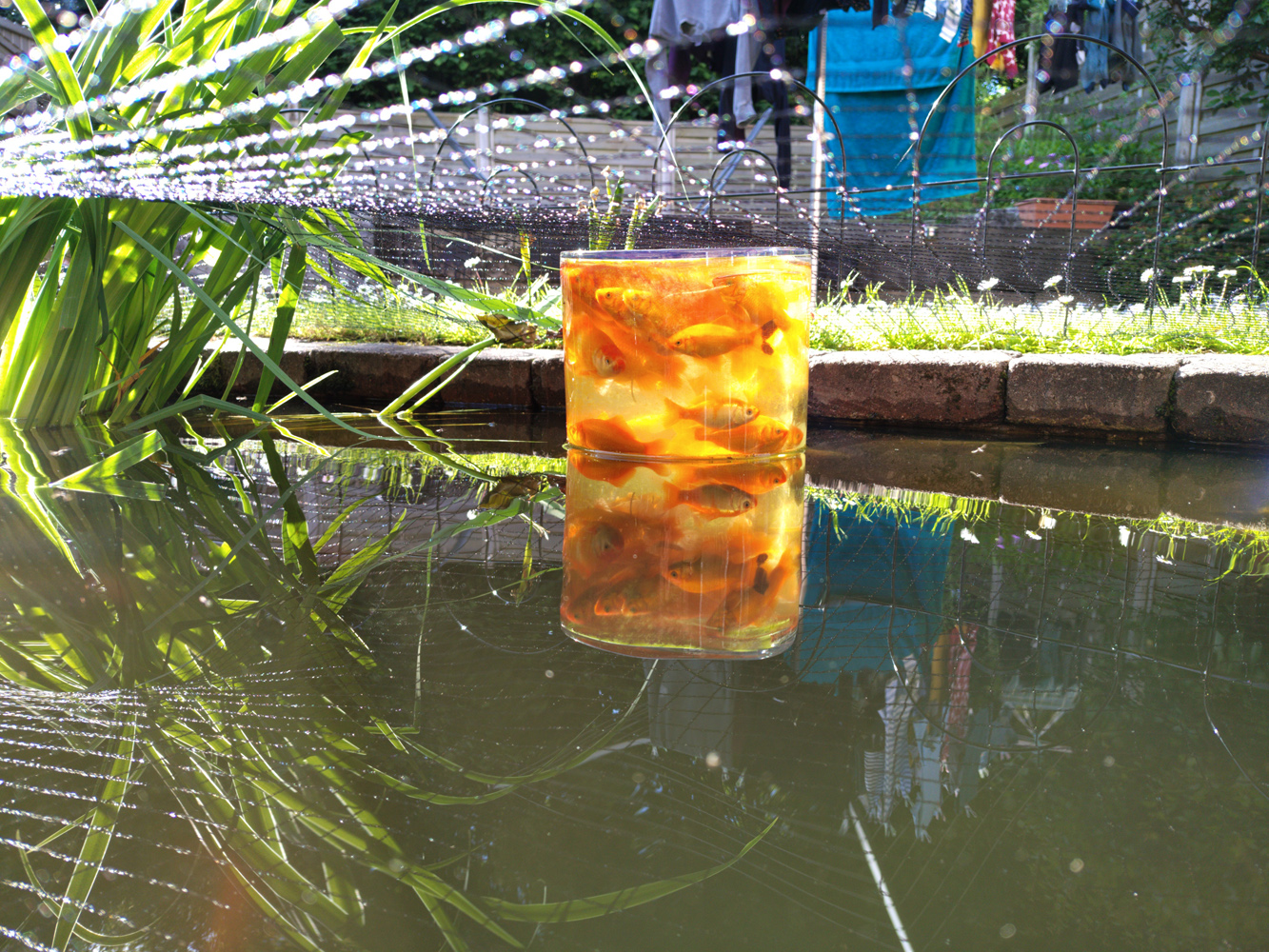


I like that you can pick between Natural and Auto-Enhance colour modes, with the latter boosting contrast and vibrancy just a tad for those who like their pics to have plenty of punch. The difference is minor for the main snapper, but benefits the ultrawide and selfie cam more.


The Edge 50 Fusion holds up well against similarly-priced rivals, regardless of lighting conditions. During the daytime photos looked clean and detailed, with well-controlled noise and convincing colours. The Pantone-validated skin tones compared favourably to the Google Pixel 8a’s Real Tone portraits, with realistic shades in both natural and artificial light.
There seems to be a lot of image sharpening going on behind the scenes, though, which made some of my shots look crunchier than they did on a Nothing Phone 2a or Samsung Galaxy A55.


Auto-HDR wasn’t always able to expose for bright skies, leading to some blown-out highlights. The 2x zoom option holds up well, though, producing pics I would happily use on social media. And while the ultrawide lens is a step down in terms of quality, it’s not a huge one, with largely consistent colours. Macro snaps go heavy on the sharpening, but add some welcome versatility.

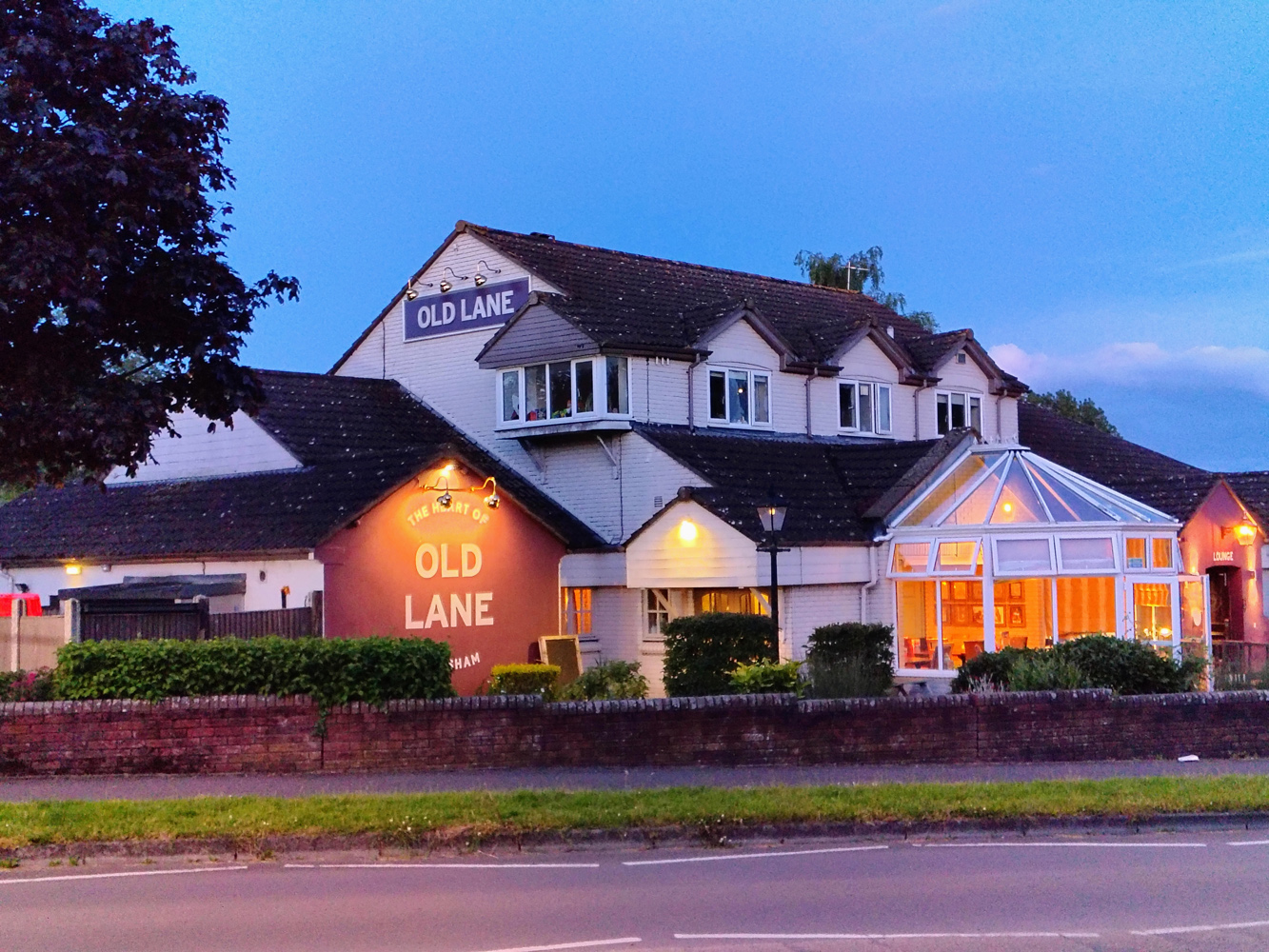
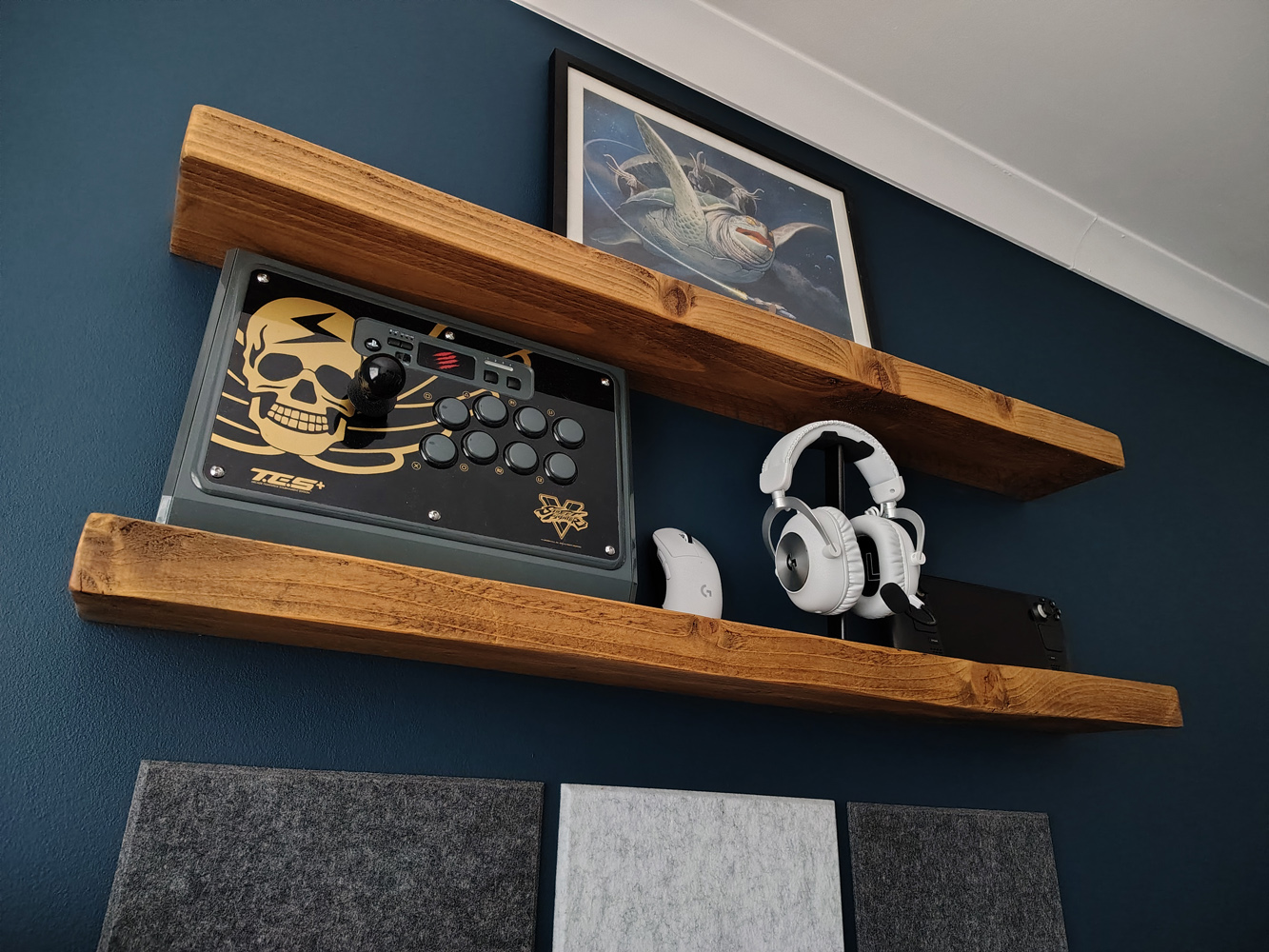
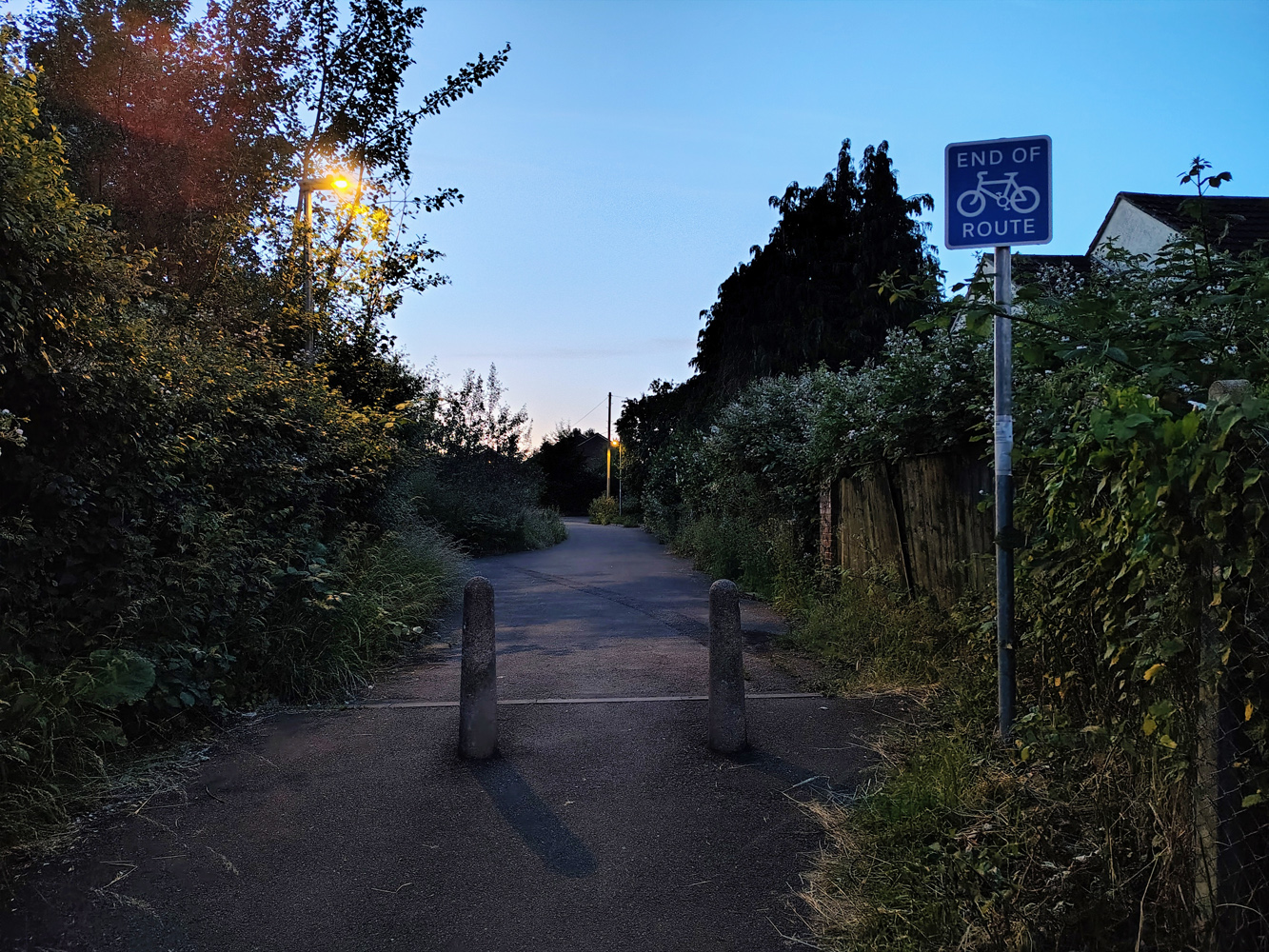
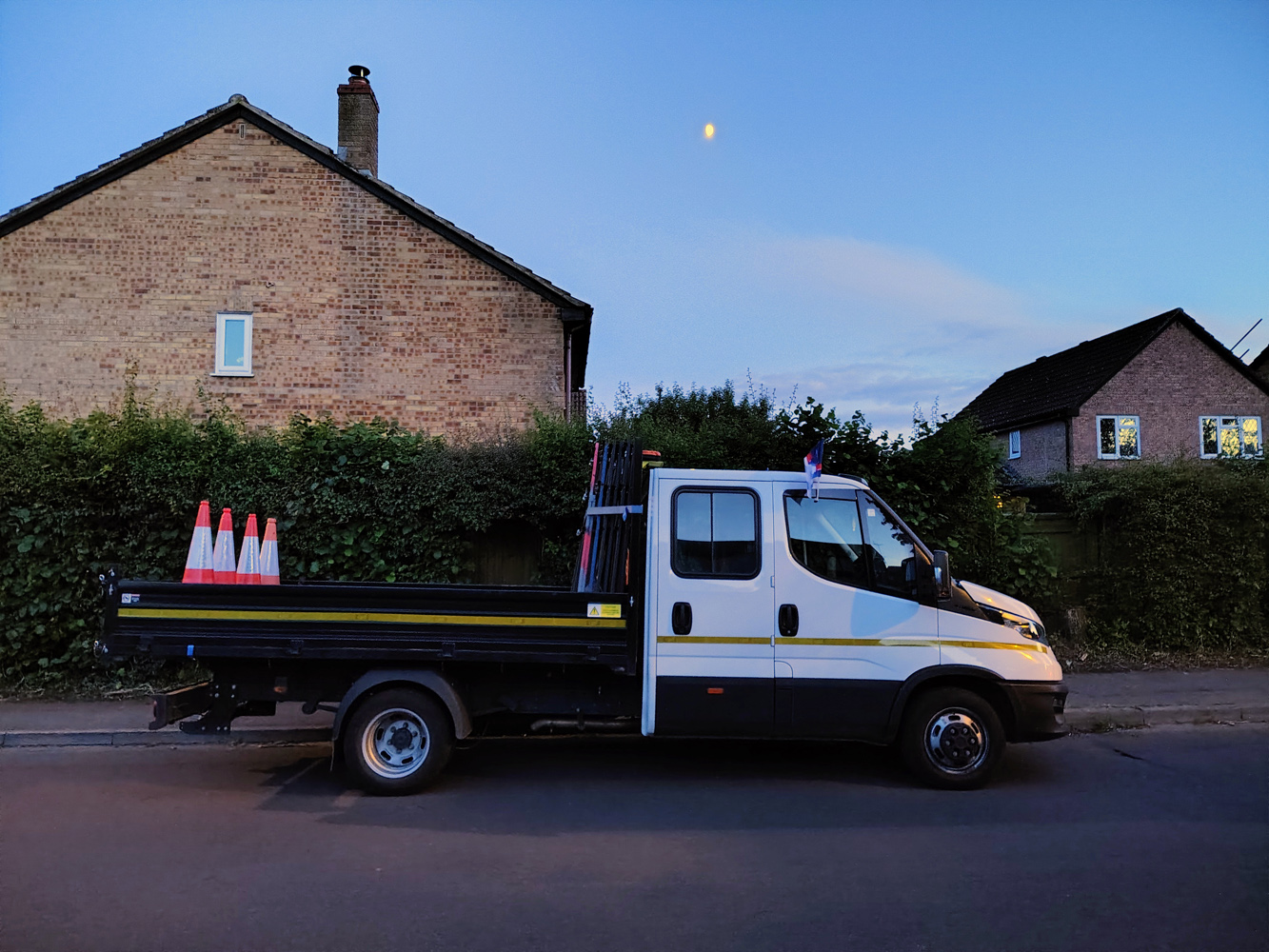
Details drop in low light, even when the automatic night mode kicks in. It’s particularly noticeable when shooting at 2x, but not so much I felt I couldn’t use it. Colours are still fairly true-to-life, and optical image stabilisation means you don’t have to stay still for very long to get satisfactory snaps.
One last quirk: I thought the camera app could’ve been a little more responsive, especially when in the portrait mode. There’s a definite wait before you can take another shot while it processes your first photo. But this is otherwise a very capable camera for a budget-minded phone.
Software experience: hello again
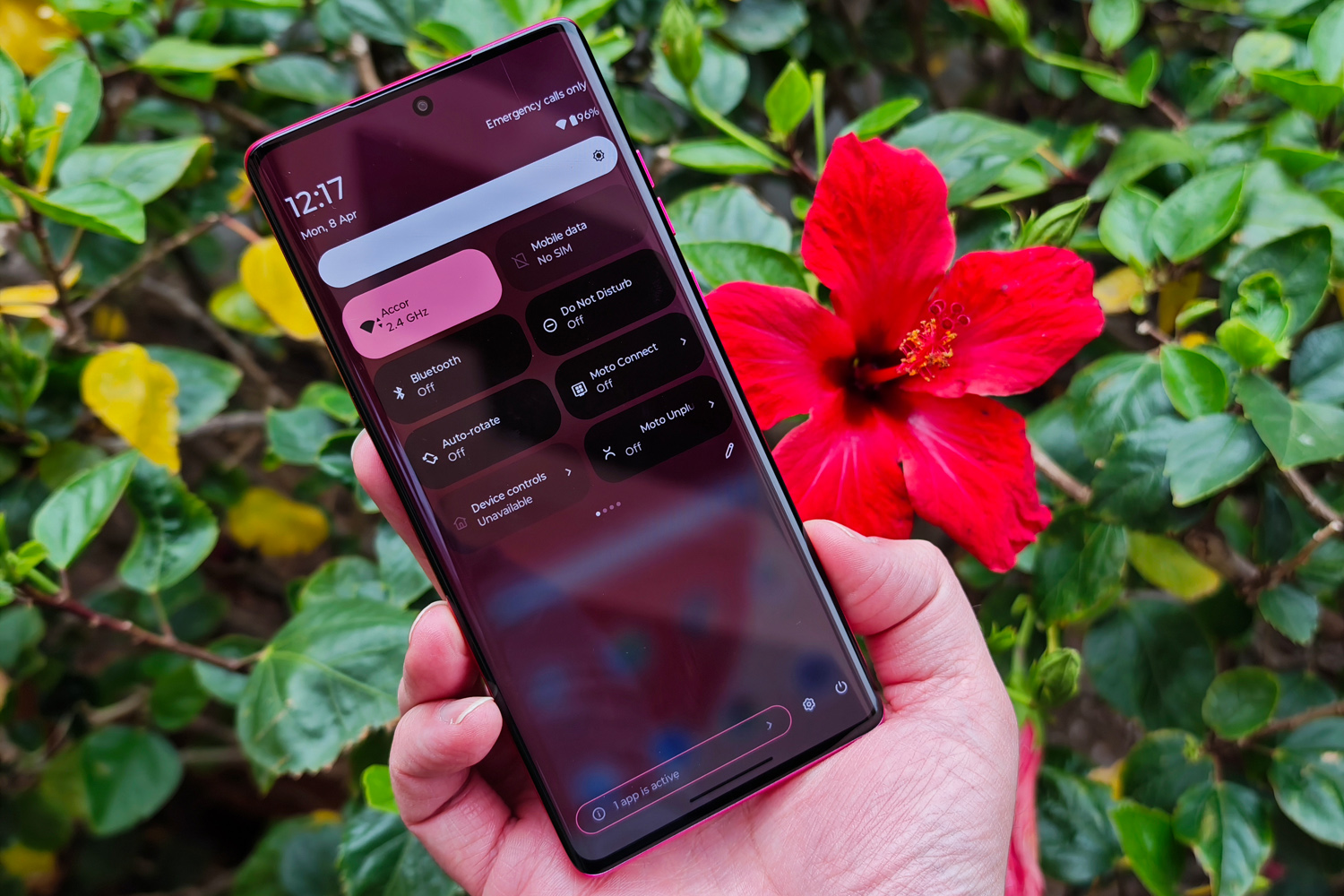
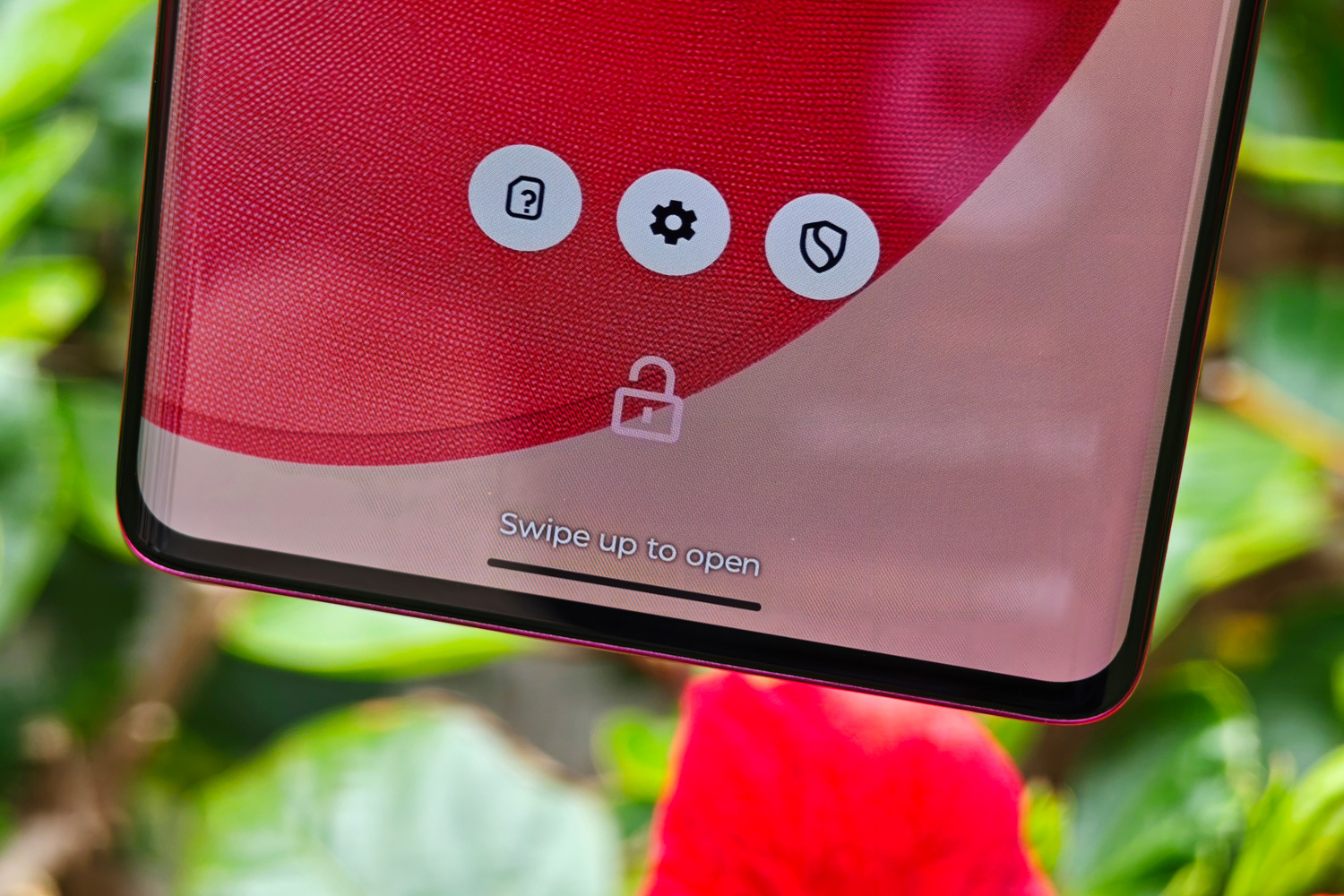
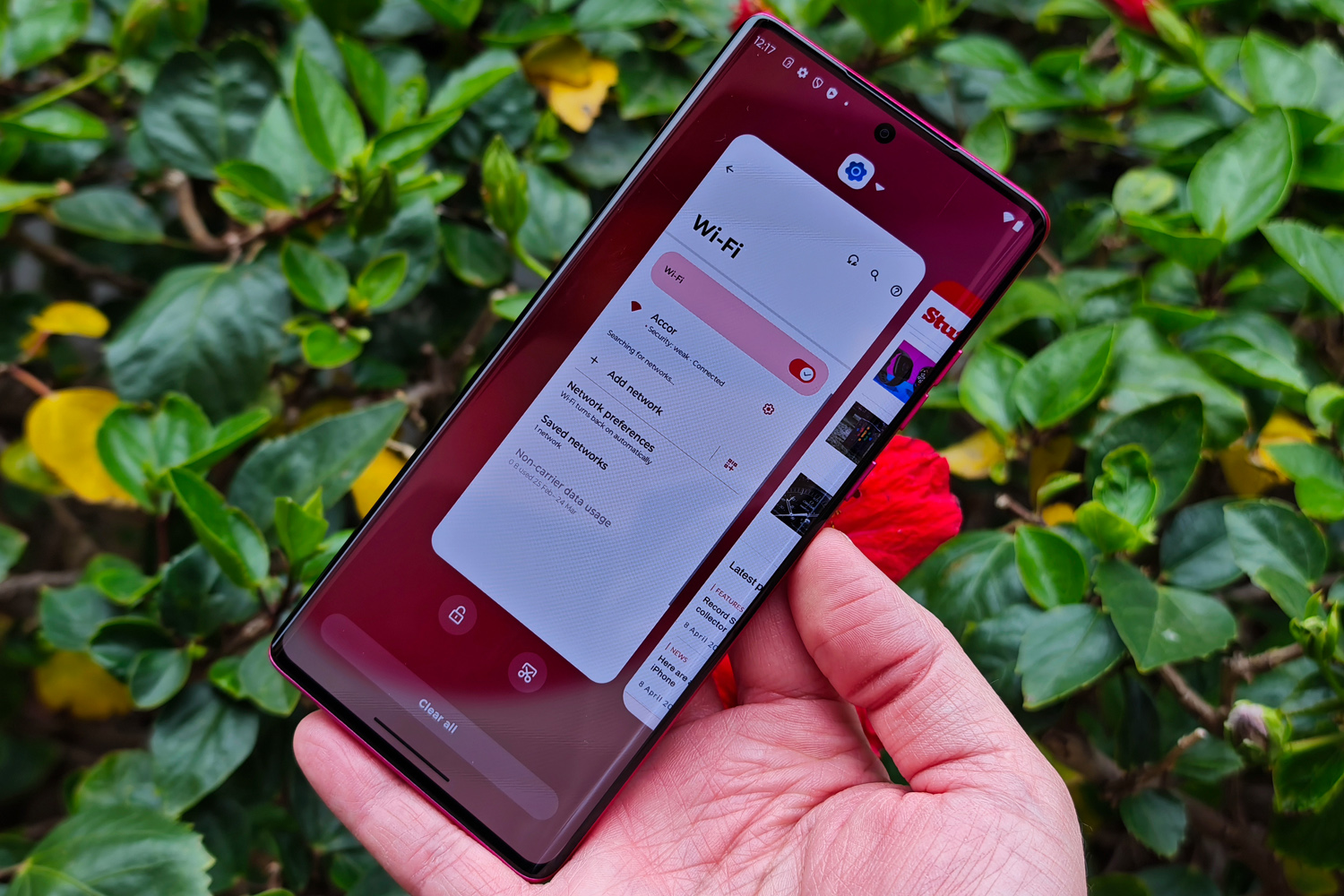
The Edge 50 Fusion has the same stripped-back UI as the rest of the Edge family, with just a handful of Motorola-badged apps alongside Google’s own. They mostly add additional features rather than double up on Android’s defaults, too. Family Space lets you silo off certain apps when you lend your phone to a little one, Moto Unplugged restricts you to certain apps for a bit of a digital detox, and Ready For makes pairing to your computer a breeze.
Motorola’s phones usually have a refreshing lack of bloatware, but the Edge 50 Fusion seemingly couldn’t escape the affordable phone trend of forcing unwanted apps on you. Tiktok and Facebook are less egregious than the bunch of freemium games that appeared on my homescreen straight after setup, but happily they could all be deleted with a few taps. That means almost all of the phone’s storage is set aside for your own apps, pics, videos and music.
Aside from a few different fonts and extra customisation options, the interface feels very much like stock Android 14, which is no bad thing.
Performance & battery life: snap to it
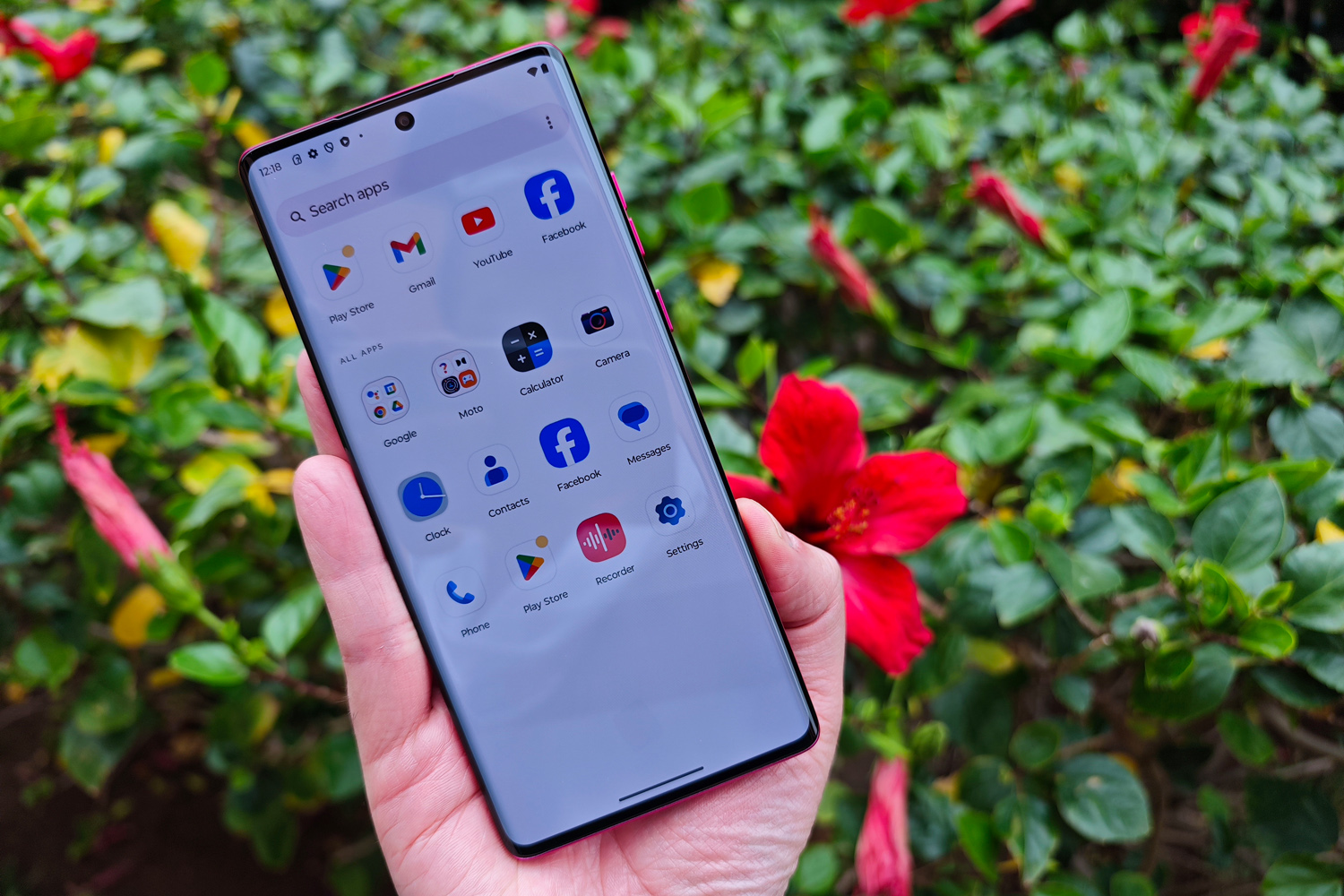
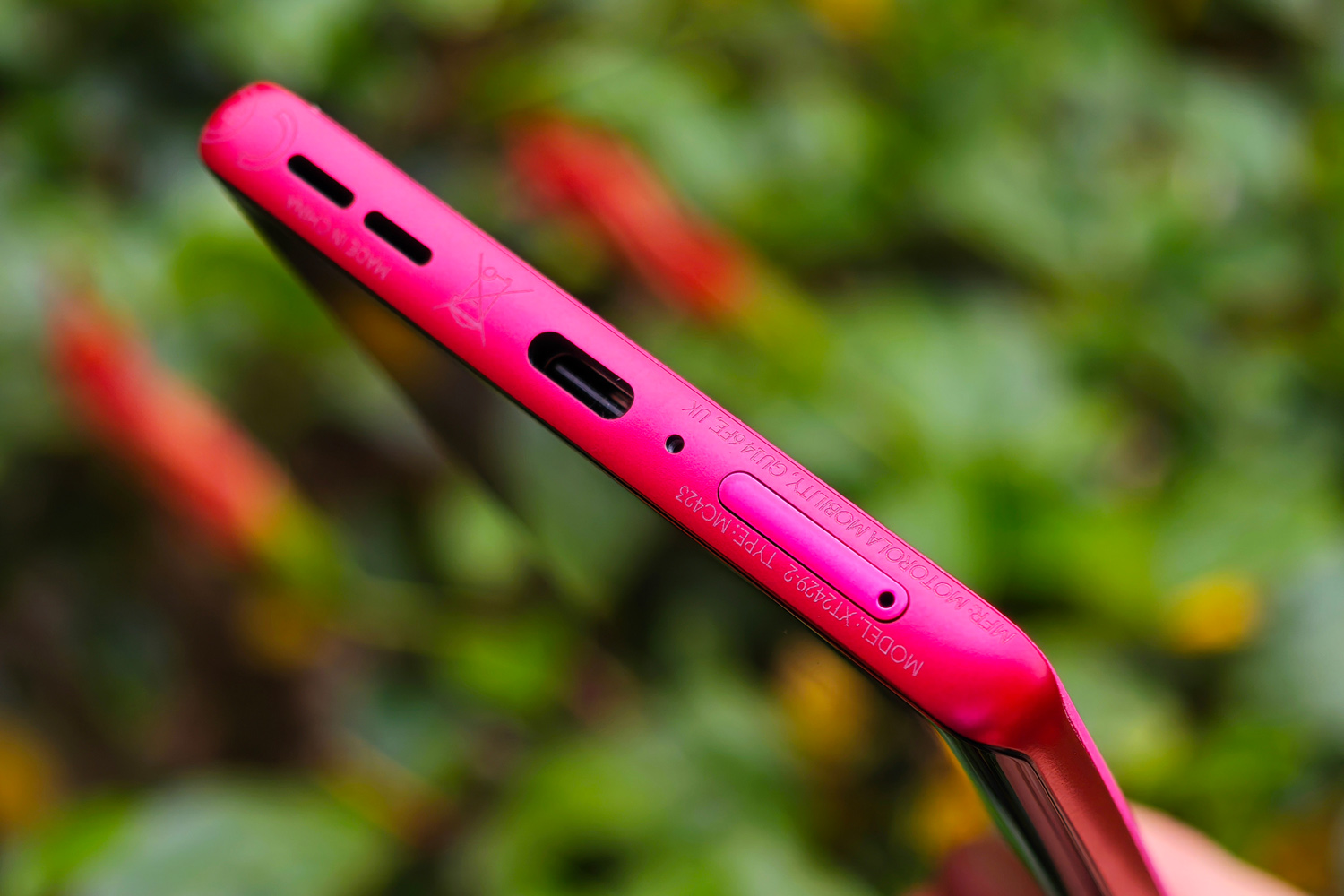
With a Snapdragon 7s Gen 2 chipset under the hood, the Edge 50 Fusion delivers a suitably punchy enough performance for the price. It’s paired with either 8 or 12GB of RAM and 128, 256 or 512GB of storage, though not every option will be available in every country. My review unit had 12GB and 256GB respectively.
Throughout my testing it felt responsive enough for an affordable handset. Apps opened reasonably quickly, and I wasn’t left waiting whenever I demanded the onscreen keyboard – one of my big bugbears with cheap phones. The Stuff website scrolls smoothly, and I could have a handful of apps open at once without it needing to reload when swapping between them. Standard stuff for the mid-range and above, sure, but not always a given for this sort of money.
Given Qualcomm’s track record with smooth gameplay I was expecting the Snapdragon 7s Gen 2 to cope just fine with most mobile titles. Frostpunk: Beyond the Ice defaulted to the second-highest detail preset and was largely smooth, with just a few chugs every now and then. Diablo Immortal can’t run at 60fps or the Ultra graphics setting, which might put dedicated gamers off, and heavy action could slow things down a tad. Still, the 2D Gacha-style titles I put far too much time into every morning during breakfast were right at home.
The Edge 50 Fusion’s longevity left little to grumble out. There’s a sizeable 5000mAh battery, which only has to power a mid-range chipset and 1080p display, and 68W wired charging is very nippy for a budget-minded handset. Motorola even includes one in the box. I saw a complete refuel in about an hour. Just don’t expect wireless charging for this kind of money.
According to its maker the Edge 50 Fusion can last over 30 hours of typical uses, meaning just one top-up every other day. I didn’t quite see that in my testing, but I could get from breakfast until bedtime with a moderately heavy mix of camera, web browsing, video playback, gaming, music streaming via Bluetooth and social media scrolling, without majorly dipping into the red. That’s up there with the best budget phones.
Motorola Edge 50 Fusion verdict
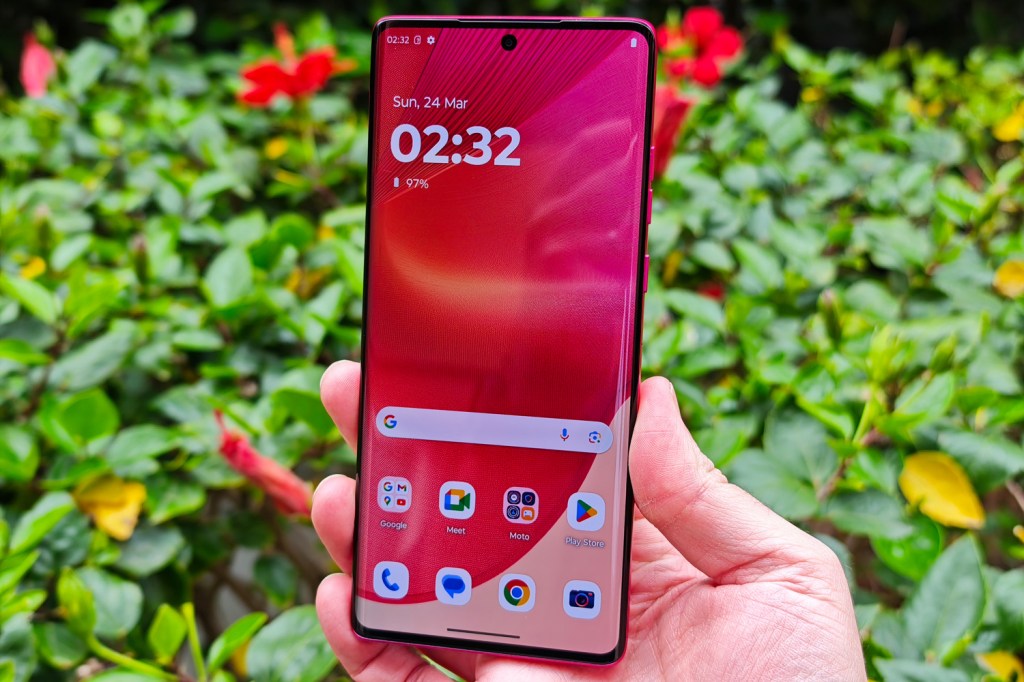
As this year’s entry point to the Edge range, the Fusion gets plenty right. It looks and feels like a pricier phone, especially if you go for one of the more distinctive colour/material options. The display is especially easy on the eyes, and there’s a sizeable battery underneath that translates to plenty of time away from the mains.
Performance is decent enough, with the chipset proving just as capable here as it has done on rival phones I’ve tried. None are gaming marvels, but them’s the breaks when you’re on a modest budget.
Camera image quality stacks up reasonably well against the sub-£400 competition, which shows improvement over previous generations given processing has been a Motorola weak spot in the past. As affordable all-rounders go, the Edge 50 Fusion is quite the contender.
Stuff Says…
Good looks, great screen, fast charging and a keen price. The Motorola Edge 50 Fusion isn’t perfect, but you get a lot of phone for the money.
Pros
Colourful designs and unique materials
Huge battery and rapid charging
Main camera has a very capable sensor
Cons
Camera app could be more responsive
A fair bit of bloatware during initial setup
Motorola Edge 50 Fusion technical specifications
| Screen | 6.7in, 2400×1080 pOLED w/ 144Hz |
| CPU | Qualcomm Snapdragon 7s Gen 2 |
| Memory | 8/12GB RAM |
| Cameras | 50MP w/ OIS + 13MP ultrawide w/ macro focus rear 32MP front |
| Storage | 128/256/512GB on-board |
| Operating system | Android 14 |
| Battery | 5000mAh w/ 68W wired charging |
| Dimensions | 16x73x7.9mm, 175g |

